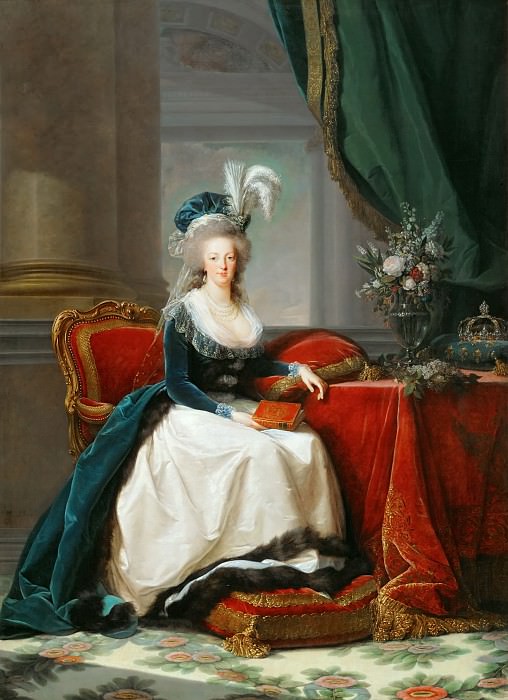
A pastel study for her reception piece, Peace Bringing back Plenty (1780, Musée du Louvre, Paris) was published by Pierre Rosenberg in 1981 (Pierre Rosenberg, "A Drawing by Madame Vigée-le Brun," Burlington Magazine, CXXIII, pp.739-40), but she does not seem to have prepared her portraits in the same manner.

Was it intended as an independent work or to present an idea for a painted composition? Unfortunately, surviving sheets by her hand are so few that we can do little more than speculate. Although she painted over twenty portraits of Marie Antoinette, the Wrightsman sheet is Vigée Le Brun’s only known drawing of the Queen. The composition was based on the Renaissance pyramidal model, invoking Raphaelesqe forerunners. She presented Marie Antoinette at once as a monarch and fulfilling the natural role of a mother as promoted by Rousseau. Although it was not within her power to redeem the unpopular queen, Vigée Le Brun’s attempt was a tour de force of state portraiture. To repair the damage, Vigée Le Brun was called upon to produce another portrait of the Queen and her children to be ready for the following Salon in 1787.

The situation came to its most critical juncture at the Salon of 1785 when the exhibition of Adolf Ulrik Wertmüller’s canvas of Marie Antoinette and her two children strolling in the Trianon Gardens (Nationalmuseum, Stockholm) met with widespread derision, apparently for the perceived frivolity of their demeanor. It would be the first of many such commissions for Vigée Le Brun, a challenging assignment as the public image of the foreign-born queen came increasingly under attack, and state portraits took on the burden of recovering her much-maligned reputation. The result, a regal, yet conventional standing portrait in an interior "en robe à paniers" hangs today in the Kunsthistoriches Museum in Vienna. When Vigée Le Brun, a young woman of twenty-three, was summoned to Versailles in 1778 to execute a full-length standing portrait of the queen, it was a distinction which must have both propelled her career and incited jealousy among certain members of the Académie royale who shared her specialty.

While some artists, like her friend Hubert Robert, at the time of the Revolution sought their survival in adaptation, Vigée Le Brun remained a staunch monarchist and found her new patrons in foreign courts and among fellow emigrés and royalist sympathizers. The young Austrian-born Queen, Marie-Antoinette was a central figure in Vigée Le Brun’s career, responsible in many ways both for her meteoric rise to fame and for her subsequent difficulties. With its stately pose and lush handling, this painterly sheet depicting Marie-Antoinette in a garden embodies all the qualities that brought success to Vigée Le Brun as a portraitist to the ancien régime court.


 0 kommentar(er)
0 kommentar(er)
